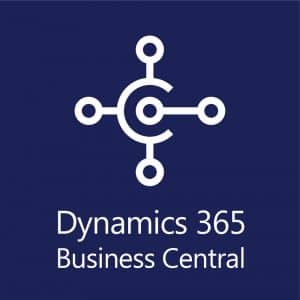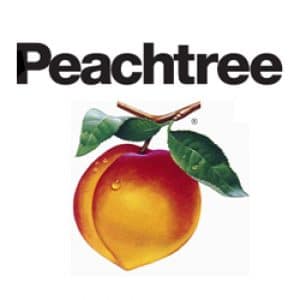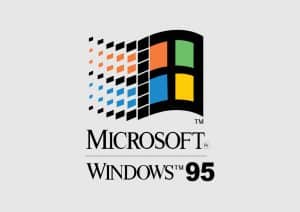About 30 years ago Navision (then named PC&C) decided to try their luck in North America. As you will learn below, the road to success was long and winding.
A small Danish software company, PC&C, founded in 1984, originally developed Microsoft Dynamics NAV (now Business Central). Three young engineers, Jesper Balser, Torben Wind and Peter Bang, saw the potential of the emerging PC technology and decided to develop an integrated DOS-based financial management product for small companies. Not because they were experts in financial management, but because they believed each and every company on the globe needed such an application.
In 1985 they launched PCPLUS and, realising that they didn’t know much about marketing and sales, decided to put the distribution in the hands of an established distributor, Sophus Berendsen Computer Products.
From idea to profit in 12 months
The product was very well received by the market and in their 2nd year of operation, PC&C was profitable (and remained so ever since).
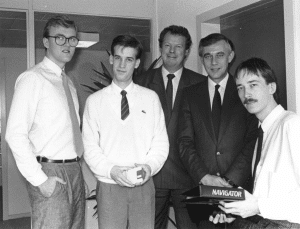
With the feedback from the market, the three engineers soon recognized the demand for a product supporting multiuser PC-network environments, and in 1987 they launched the first version of Navision, named Navigator.
This time they managed to win IBM Denmark as their distributor, and they terminated the agreement with Berendsen.
IBM was a major player in the PC market in the 1980s, and IBM Denmark had developed a marketing strategy that gave the company the highest market shares in any country in the world. Although Denmark is a small market (representing about 0.24 per cent of global demand) this strategy, which contributed one per cent to IBM’s global turnover, was admired by the company’s executive office.
Navigator for the IBM AS/400
In the market for small and medium-sized businesses, IBM was very successful with their minicomputer, then named AS/400 (launched as a successor to S/36 in 1988). IBM pushed PC&C for a version of Navigator running on the AS/400, and the development of this version was undertaken.
Through these activities, an AS/400 salesman, by the name of Erik Seifert from IBM Denmark, became acquainted with Navigator. He immediately saw the global potential that the product represented. With Navigator, IBM could win substantial market share in the vast market represented by small and medium-sized companies.
In 1989 Erik approached the country management of IBM Denmark with the idea of creating a small team responsible for convincing other IBM subsidiaries around the world to adopt Navigator as an IBM logo product and win market shares just as IBM had done in Denmark. He was particularly keen on getting the activity started in the US. If they took on Navigator in the US, other countries would automatically follow.
The Danish country management was reluctant. Their focus was on selling into the local market, where they were very successful. Doing cross-border activities was a new idea for which there was no established procedure and for which they didn’t have a budget and related resources. Erik explained the global potential and how it would support IBM’s hardware sales. Still, he wasn’t able to convince them to support the idea.
IBM’s reluctance didn’t stop him. Instead, he turned to PC&C with his ideas. The PC&C founders were also reluctant. They were still a tiny shop with a staff of just 12 people, didn’t feel prepared to challenge the biggest market in the world located 6-9 time zones away and were also convinced that there was already something equivalent or even better on the US market. However, after lengthy discussions, Erik managed to convince them that they should give it a try and that North America should be the testbed.
Navigator 3.0 (with an Application Language)
In the meantime, PC&C had terminated the development of the AS/400 version and had instead released a version 3 of Navigator for DOS and OS/2 with an application language (AL) allowing the resellers to customise and add functionality to the product. This concept proved to be an even more significant success than the previous products and made Erik more convinced that the global market potential should be tapped now.
Erik left IBM in March 1990, moved to North America and started approaching IBM Canada. Although he managed to infiltrate the organisation, he was not able to win support for investing in a business with Navigator. Running out of funds, Erik returned to Denmark and continued the discussions with PC&C about the opportunities in America.
PC&C Americas Inc.
On October 2nd, 1990 PC&C Americas Inc. was established in Atlanta, Georgia with Erik having 25 per cent of the shares and PC&C 75 per cent.
Erik then adopted a strategy of approaching all the major software vendors and selling them the idea of moving into the market for business management software through a channel of value-added resellers. He approached IBM, Microsoft, Lotus, WordPerfect, Computerland and many other leading IT companies. Still, none of them showed any genuine interest and they also had a hard time understanding what he was talking about.
In spring 1991, PC&C lost confidence in the venture and decided to pull out. Erik was not prepared to return to Denmark with the second failure in his bag. From his work in the field, he also experienced that Navigator was several years ahead of anything available in the US. He wanted to stay and carry on, and as his visa and work permit was tied to PC&C Americas Inc., he decided to buy the shares from PC&C for a nominal price ($1,400) and continue on his own account, again funding his effort with money from friends and relatives. With the exclusive rights for North and South America, he was convinced that there was enough market to build a successful business.
The Peachtree opportunity
Being on his own again, he reconsidered the strategy. He came to the conclusion that maybe the current providers of business management software were better targets. At least they would understand what he was talking about. He researched the market, developed a list of potential targets and started calling on their CEOs.
They surely did understand what he was talking about, but working with Erik and PC&C would be the same as giving up their own products, and none of the CEOs saw that as an attractive scenario for the future.
One early morning in July 1991, Erik called on Bill Goodhew, the CEO of Peachtree Software. On that particular morning, Bill picked up the phone himself and took the call. As Bill was not the engineer behind the Peachtree product, but rather the business executive taking care of strategy, organisation, marketing and sales, he didn’t suffer from the “not-invented-here” syndrome and listened to what Erik had to say. Peachtree already had a new product in the pipeline. Still, he was curious to learn why IBM in Denmark had chosen to work with PC&C and asked Erik to come over for an introduction.
The introduction went very well. Bill Goodhew was positive while the VP of R&D was more sceptical, mainly because adopting a product from a third party meant dropping their own development project. Nevertheless, Erik got the green light from Bill Goodhew, and further evaluations were initiated, eventually leading to negotiations about terms and conditions for exclusive representation in the US.
PC&C in Copenhagen were now involved in the discussions, and it became clear to Erik that the final contract would be made directly between Peachtree and PC&C in Denmark. As the deliberations entered a deadlock in October 1991, Erik was running out of funds. He made an agreement with PC&C and became an agent instead of a distributor. Part of this agreement also secured Erik a retainer enabling him to continue to drive the project from his base in Atlanta.
The distribution agreement between PC&C and Peachtree was signed in August 1992, securing Peachtree exclusivity for the US market for five years against a committed minimum royalty of five million dollars to be paid during the period. The agreement required that PC&C should provide a localised version of the product, and this work was now started.
From his base in Atlanta, Erik continued to support Peachtree in their efforts in building the new team for running the business with Navigator (which was to be branded Avista in the US). To head the team Erik recommended recruiting one of his previous IBM Denmark colleagues, René Stockner, who was responsible for the relationship with PC&C in Denmark and therefore intimately familiar with the product, the business model and had excellent relations with the PC&C people. Rene accepted the challenge and relocated with his family to Atlanta, Georgia in 1993. With Peachtree covering the US market and Rene Stockner heading the Peachtree project, Erik was offered to assume responsibility for all of PC&C’s global sales and marketing activities. A position he accepted and performed from his base in the US.
Then nothing happens
Although the challenging commitment of paying five million dollars in minimum royalty should motivate Peachtree to move ahead at full speed, things were developing slowly. One of the reasons was the increasing popularity of Microsoft Windows for which there was no support in Navigator. Instead of porting Navigator, PC&C had decided to develop a new product, taking full advantage of the Windows platform. However, the release of this product kept getting postponed.
Another reason became obvious in June 1994, when Peachtree was acquired by ADP (Automatic Data Processing). Companies in the process of being acquired do not invest heavily in new business ventures. ADP was not interested in continuing the Peachtree/Avista project, and the activity was therefore divested into a separate company, where PC&C got a majority share in return for reducing the royalty commitment.
Now PC&C was in the driver’s seat, and René Stockner could devote all his energy to the recruitment of new resellers.
Microsoft Windows 95
PC&C’s decision to develop a new product for the upcoming version of Windows, then codenamed Chicago, was a big bet. Microsoft initially scheduled the release for late 1993, but it didn’t reach the market until August 1995. At the time of release the new version of Navigator, now named Navision Financials, was the one and only ERP product certified for the new operating system.
Windows 95 became a rapid success and quickly captured the hearts and minds of customers and developers reaching a 57.4 per cent market share in 2002. All the hard work PC&C, renamed Navision Software in 1995, had done building a global reseller channel now paid off.
In 1995 Navision Software also increased their majority share in the US operation to 70% of the company and now fully controlled the operation. From then on things start moving and the business snowballed.
Although Navision Financials initially was the only product certified for Windows 95, Stockner still faced several challenges. Navision Software was a small, unknown company with few resources, an excellent product, and a brand-new business model. Resellers were to make money on customisation, implementation and extensions.
When René travelled around the USA to find new resellers, he needed them to make quick decisions, and what could be more stimulating than a cheaper admission ticket? Therefore, he offered them free training and support and a 50 per cent discount on the recommended list price, terms which were entirely unheard of and very attractive within the IT industry. In return, however, he was to get a 15 per cent share of their service revenue, which stemmed from the Navision business. Although resellers had to adhere to strict training and certification requirements, they were able to get started without having to put their hands in their own pockets. As they earned only a little service revenue at the beginning, it seemed like a good deal.
As the resellers grew and their customization service revenues increased, it also became an attractive business for Navision Software. Indeed, it was such a profitable business that even if business partners didn’t sell new licences, Navision continued to earn from the resellers’ service revenue. The genius of the model was that it made it easy for partners to get started. Despite the vast majority of other vendors’ resellers levelling off once they reached a certain number of customers, Navision’s resellers (named “Navision Solution Centres”) continued to make positive contributions to Navision Software’s business.
Microsoft acquired Navision
When Microsoft acquired Navision in 2002, the revenue in North America accounted for 13 per cent of Navision’s global turnover of close to two billion DKK (USD 300M) with an EBITA-margin of 23 per cent.
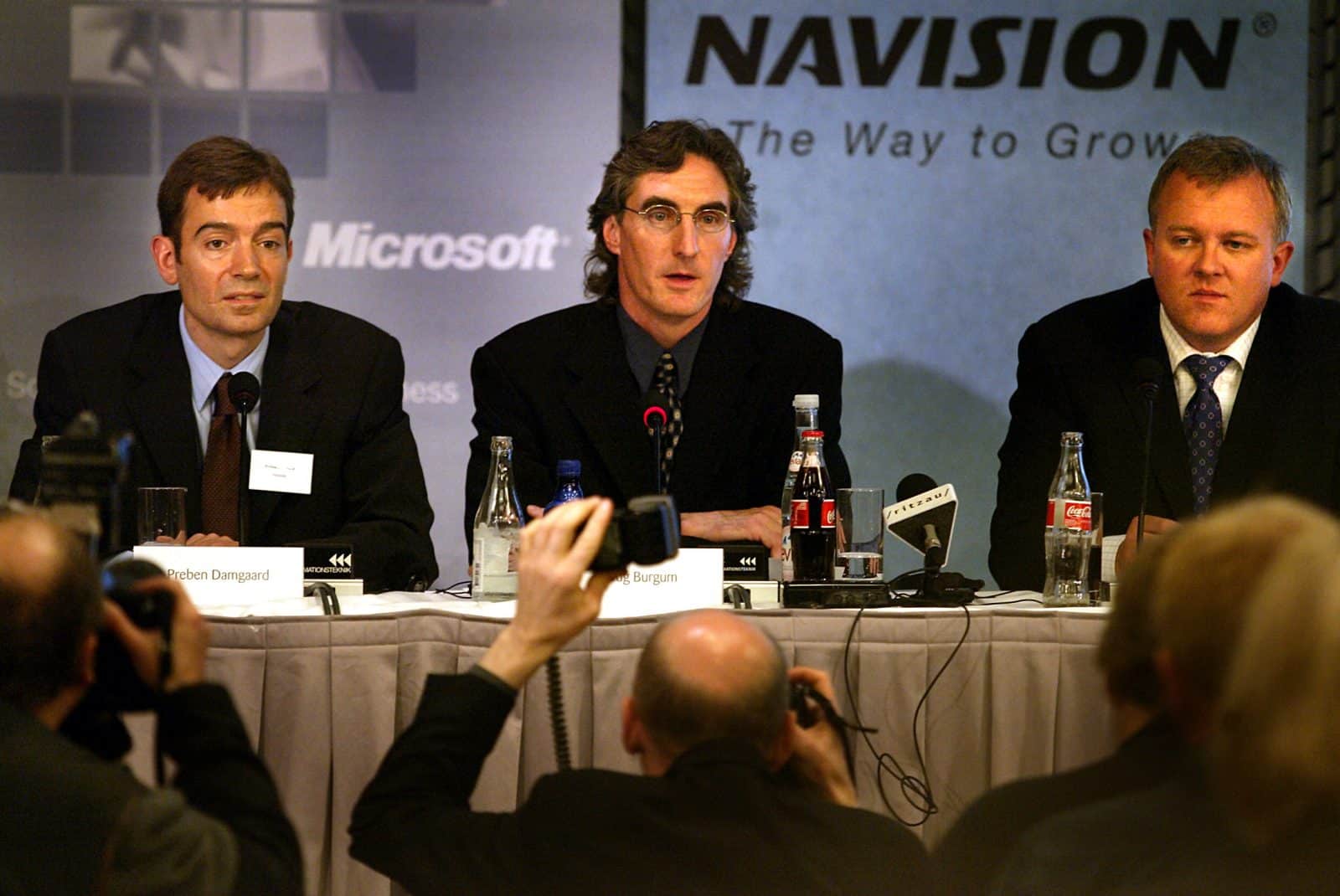
Tuesday. May 7th 2002, Copenhagen, Denmark.
(Photo: BJARKE ØRSTED/SCANPIX NORDFOTO 2002)
In November 2000 Navision Software merged with Damgaard and became NavisionDamgaard. On March 15th 2001 the name was changed to Navision.
Sources:
- 5,460 Miles from Silicon Valley – The In-depth Case Study of What Became Microsoft’s First Billion Dollar Acquisition Outside the USA and Going Global on a Shoestring
- Global Expansion in the Software Industry a Small Budget.
Thank you to Erik Seifert and René Stockner for reviewing and commenting on the post.
